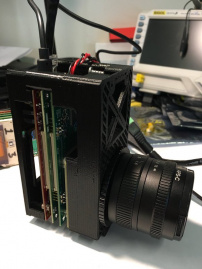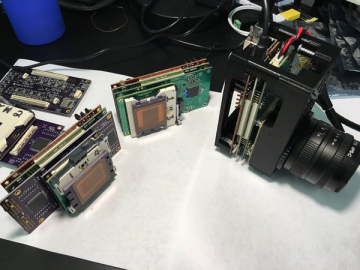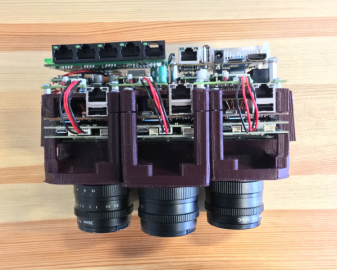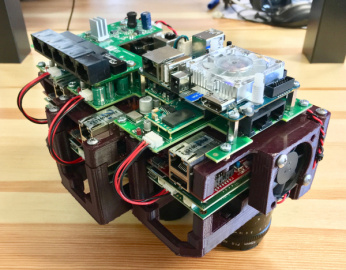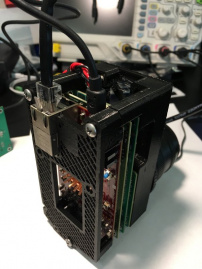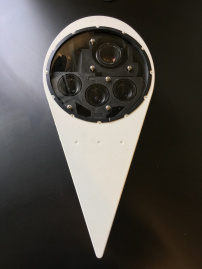Difference between revisions of "AXIOM Beta/Case Studies"
m |
m |
||
| Line 43: | Line 43: | ||
Kinograph is an open source film scanner for digitizing 35, 16, and 8mm film. The project is in active development and in its early stages. | Kinograph is an open source film scanner for digitizing 35, 16, and 8mm film. The project is in active development and in its early stages. | ||
<gallery mode="packed" heights="250"> | |||
Image:Kinograph 01 sm.png| AXIOM Beta board stack with sensor rotated. | |||
</gallery> | |||
Kinograph 01 sm.png | |||
While living and teaching in Jordan, Matthew Epler, the project founder, discovered a collection of 850 orphaned film canisters. With no financial support for their digitization and no equipment in Jordan to view the films, he decided to make a machine that could be built there with parts easily purchased online and with the cameras that were available. | While living and teaching in Jordan, Matthew Epler, the project founder, discovered a collection of 850 orphaned film canisters. With no financial support for their digitization and no equipment in Jordan to view the films, he decided to make a machine that could be built there with parts easily purchased online and with the cameras that were available. | ||
Revision as of 05:40, 12 November 2017
AXIOM Beta I Developer Kit
apertus° offers AXIOM Beta I Developer Kits without an enclosure either in kit form or readily assembled. The AXIOM Beta I provides easy access to the camera’s printed circuit boards, ideally suited for those who want to work on software/hardware related development. With this in mind all associated design files, Schematics, Board layouts, BOMs, STEPs and software source code repositories, etc. are made freely available.
Several pioneering organisations in the technology sector work with the AXIOM Beta because it allows them to reconfigure a camera around existing hardware designs whilst maintaining high quality video data capture. Being able to process data on-board and seamlessly integrate the camera with other devices running in conjunction brings a tremendous degree of freedom when compared with existing proprietary cameras. As the AXIOM Beta runs Arch Linux creating and integrating custom software is straight forward.
The following is a list of some example case studies with camera users who've adapted the AXIOM Beta to suit their requirements.
1 Mavrx
Mavrx, a leading provider in the precision agriculture industry in the USA, provides farmers with actionable metrics and alerts about the health of their crops via multi-spectral imaging collected via a network of cameras mounted onto small aircraft and flown across the USA. The imagery measures plant health, nitrogen content, and pin-points pest and weed infestations, giving farmers precious days or even weeks to take corrective action.
Mavrx adapted the AXIOM Beta’s hardware design by rotating the image sensor 90º and shifting it to the edge of the PCB stack and removing one of the PCBs. This configuration allowed them to fit three AXIOM Betas, a DSLR and a control & image storage computer into their airborne camera pod, which helped them prototype their next-generation multi-spectral camera system.
“In the interests of safety the pre-certified flight pods we attach to the wings of light aircraft are tightly regulated. For our purposes (aerial mapping), using more typical cameras is impossible, but thanks to the flexibility of the AXIOM Beta we were able to reconfigure its PCB's and harness the power of three cameras, each filtering its own band of spectral data to our custom designed software systems.” - Anthony May, Mavrx Inc.
See:
2 Kinograph
Kinograph is an open source film scanner for digitizing 35, 16, and 8mm film. The project is in active development and in its early stages.
Kinograph 01 sm.png
While living and teaching in Jordan, Matthew Epler, the project founder, discovered a collection of 850 orphaned film canisters. With no financial support for their digitization and no equipment in Jordan to view the films, he decided to make a machine that could be built there with parts easily purchased online and with the cameras that were available.
